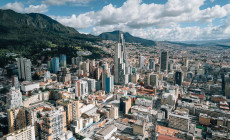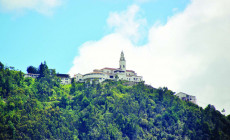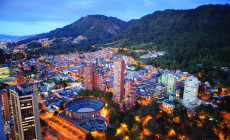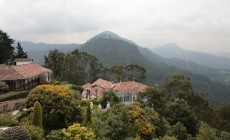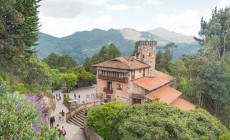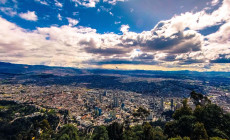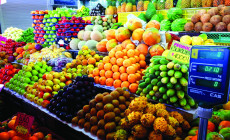-
Latin America
Latin America
- Countries (hidden space)
- Galapagos & Ecuador
- Guatemala
- Mexico
- Panama
- Peru
- Popular Attractions
- Machu Picchu
- Inca Trail
- Easter Island
- Galapagos Islands
- Patagonia
- Rio de Janeiro
- Iguazu Falls
-
Africa
Africa
- Spacer Africa
- South Africa
- Zimbabwe
- Popular Attractions
- Cape Town
- Okavango Delta
- Sossusvlei Dunes
- Victoria Falls
- The Kruger
- The Garden Route
- Masai Mara
-
Asia & Middle East
Asia & Middle East
- Asia
- Borneo (Malaysia)
- Cambodia
- India
- Japan
- Middle East
- Jordan
- Spacer Asia
- Laos
- Sri Lanka
- Uzbekistan
- Vietnam
- Popular Attractions
- Taj Mahal
- Lion Rock (Sigiriya)
- Angkor Wat
- Ha Long Bay
- Kyoto
- Petra
-
Destinations
- Latin America
- Argentina
- Bolivia
- Brazil
- Chile
- Colombia
- Costa Rica
- Galapagos & Ecuador
- Guatemala
- Mexico
- Panama
- Peru
- Asia
- Borneo (Malaysia)
- Cambodia
- India
- Japan
- Laos
- Sri Lanka
- Uzbekistan
- Vietnam
- Middle East
- Jordan
- Southern & East Africa
- Botswana
- Kenya
- Namibia
- South Africa
- Zimbabwe
- Contact Us
-
About
About
Llama Travel provides high quality holidays at the lowest possible prices.
99% recommend us Lower prices - guaranteed Financially protected by ATOL
Home to a population of eight million people from all corners of Colombia, Bogotá boasts a blend of culture and architecture, from the ancient to the modern. The old town of Candelaria is full of small cobbled streets and colourful buildings. In the Gold Museum you will find the richest collection of pre-Hispanic gold anywhere in the world.
Bogotá Location
Bogotá is tucked on a high plateau in the Andes of central Colombia, 2,600 metres above sea level. Colombia’s cosmopolitan capital city is the third-highest capital in South America, and due its altitude the city tends to remain a few degrees cooler than the rest of the country.
Bogotá History
The modern-day capital city of Bogotá is located in the highland department of Cundinamarca. The area was first populated by indigenous groups such as the Muiscas, who were highly skilled in weaving and pottery and lived principally through agriculture. The Spaniard Gonzalo Jiménez de Quesada founded the city as Santa Fe de Bogotá in 1538, and in April 1550 it became an official outpost of the Spanish Empire.
Independence from Spain was declared for the first time in Bogotá on 20 July 1810, as decades of political discontent came to a head. However, it was not until the decisive Battle of Boyacá in 1819 that the republic of Gran Colombia was eventually formed. Bogotá became the nation’s capital in 1821, which comprised presentday Colombia, Venezuela, Panama and Ecuador. Geographic and political difficulties quickly led to the republic’s collapse and in the second half of the 19th century, civil wars continued, whilst significant state reforms were implemented.
The 20th century brought major expansion and development to Bogotá, with a population increase from around 700,000 in 1950 to almost 8 million today. Despite decades of political unrest, largely following the assassination of prospective presidential candidate Jorge Eliécer Gaitán on 9 April 1948, Bogotá has recently developed into a safe, thriving capital.
Bogotá Attractions
The famous Botero Art Museum, hosts Fernando Botero’s collection of proportionally exaggerated figures. The districts of Parque 93, Zona Rosa and Usaken are great for restaurants, shopping and bars. There is also plenty of green space such as the Simon Bolivar Park Metropolitan Park. To fully appreciate the spectacular landscapes, you can take a cable car ride up the 3,152-metre Monserrate Hill and take in the wonderful views of the sprawling city.
Modern Bogotá
The Zona Rosa, located in the north of the city, is characterised by modern restaurants, fashionable bars and night clubs, designer boutiques, international shopping chains and parks. There is a sharp contrast between this tourist-friendly and affluent area and the historic centre, which still bears signs of its colonial past.
Historic Centre
The city of Bogotá was founded where the historic district of La Candelaria now stands. Its narrow, cobbled streets and colourful buildings remain much the same as they did at the end of the colonial period. Housing many of the capital’s theatres, universities and popular eateries, La Candelaria is also home to the presidential palace, government buildings and the cathedral. The central Plaza de Bolívar is a bustling square, witness to many political demonstrations, and a good place to see local artists and street performers. A number of restaurants on Calle 11, which heads east from the Plaza de Bolívar, offer typical regional and national Colombian dishes in an attractive setting. Bogotá has become something of a Mecca for street artists and walking through the streets of La Candelaria you are sure to see hundreds of thought-provoking pieces in a range of mediums, ranging from half-hidden stickers to 3D installations on rooftops.
Museums in Bogotá
One of the most frequented tourist attractions in Bogotá is the museum dedicated to gold, the Museo del Oro (closed Mondays). It hosts an impressive collection of pre-Hispanic gold work in well-presented displays with information in English and Spanish. Here you will learn not only about Colombia’s gold, but also about the culture, rituals and way of life in pre-Hispanic times. The museum is housed in a modern building right in the centre of town.
The Botero Museum (La Candelaria, closed Tuesdays) is home to many drawings, paintings and sculptures by 20th century Colombian artist Fernando Botero, who is renowned for depicting his subjects with disproportioned bodies. It also houses the artist’s impressive private art collection. Just across the road, it is worth visiting the Luis Angel Arango library, which, over the course of the 20th century, has grown to be one of the most important libraries in Latin America. It often hosts temporary exhibitions on subjects of local interest.
The neighbouring Centro Cultural Gabriel García Márquez, dedicated to Colombia’s internationally esteemed author, also holds exhibitions and has a café and book shop.
Cerro de Montserrate
Situated on the eastern edge of Bogotá, the hill of Monserrate offers panoramic views of the city and surrounding area. To reach the top, you can take a cable car, funicular train, or walk to the summit, which reaches 3,152m. The church at the top, devoted to “El Señor Caído” (Fallen Lord), was built in the 17th century and is a popular pilgrimage site.
Day Trips from Bogotá
Salt Cathedral in Zipaquirá
The beautiful underground salt cathedral at Zipaquirá, approximately 50km north of the city, is one of Colombia’s most fascinating attractions. Created in old mining tunnels, the cathedral features huge, atmospheric chambers and is constructed almost entirely of salt.
Laguna de Guatavita
Located 75km north-east of Bogotá and 3,000m above sea level, the Laguna de Guatavita is linked to the legend of El Dorado. It was a sacred lake and ritual centre for the indigenous Muisca culture, and it is said the people deposited offerings of gold into the lake’s dark waters. There are several lookouts on a walking trail above the water.
Chicaque National Park
The cloud forest at Chicaque National Park is only 20km west of Bogotá. The park offers several hiking trails, horse riding and bird watching; it is home to over 200 species of birds, in addition to wildlife such as hares, sloths, monkeys and wild cats.
Bogotá is a great city to explore on any trip to Colombia. Find out more here.

